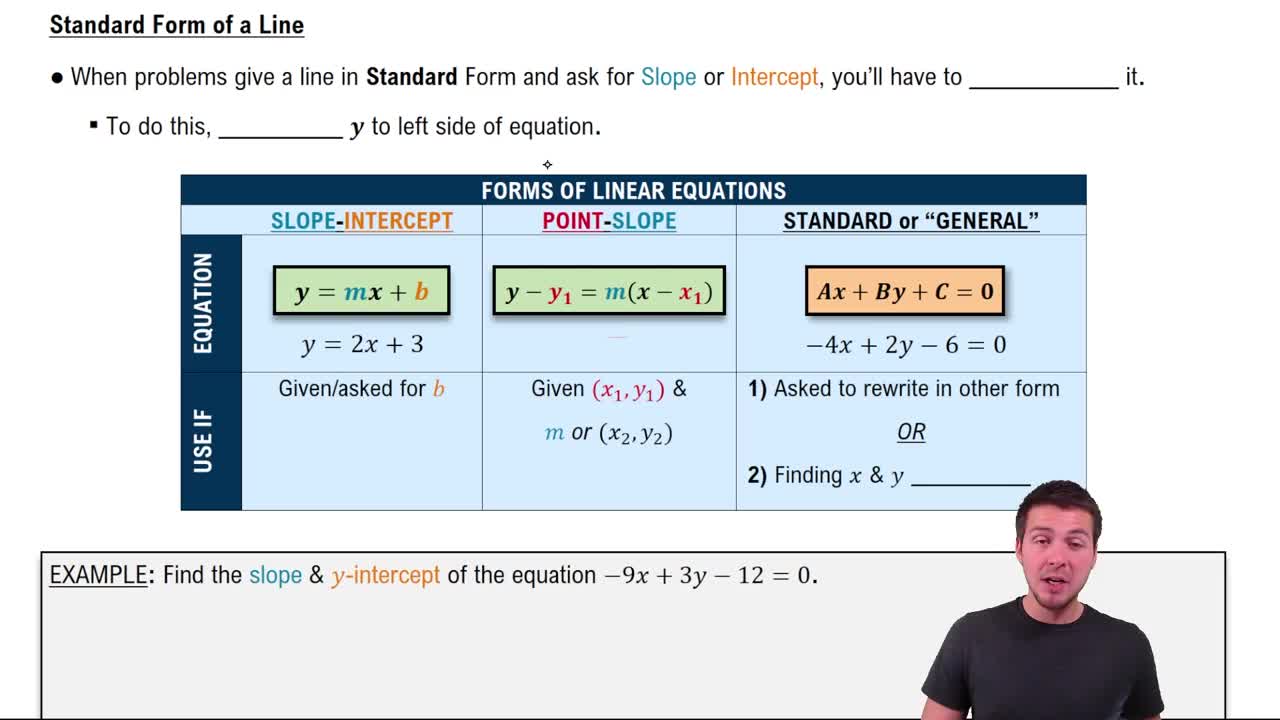Here are the essential concepts you must grasp in order to answer the question correctly.
Horizontal Lines
A horizontal line is a straight line that runs left to right across the graph and has a constant y-value. The equation of a horizontal line can be expressed in the form y = b, where b is the y-coordinate of any point on the line. For example, a horizontal line through the point (-7, 4) would be represented by the equation y = 4.
Recommended video:
Standard Form of an Equation
The standard form of a linear equation is typically written as Ax + By = C, where A, B, and C are integers, and A should be non-negative. This form is useful for quickly identifying the x-intercept and y-intercept of the line. For a horizontal line, the standard form can be derived from its equation by rearranging it to fit this format.
Recommended video:
Standard Form of Line Equations
Slope-Intercept Form
The slope-intercept form of a linear equation is given by y = mx + b, where m represents the slope and b is the y-intercept. For horizontal lines, the slope (m) is 0, indicating no rise over run, and the equation simplifies to y = b. This form is particularly useful for graphing, as it clearly shows the y-intercept directly.
Recommended video:
 Verified step by step guidance
Verified step by step guidance Verified video answer for a similar problem:
Verified video answer for a similar problem:

